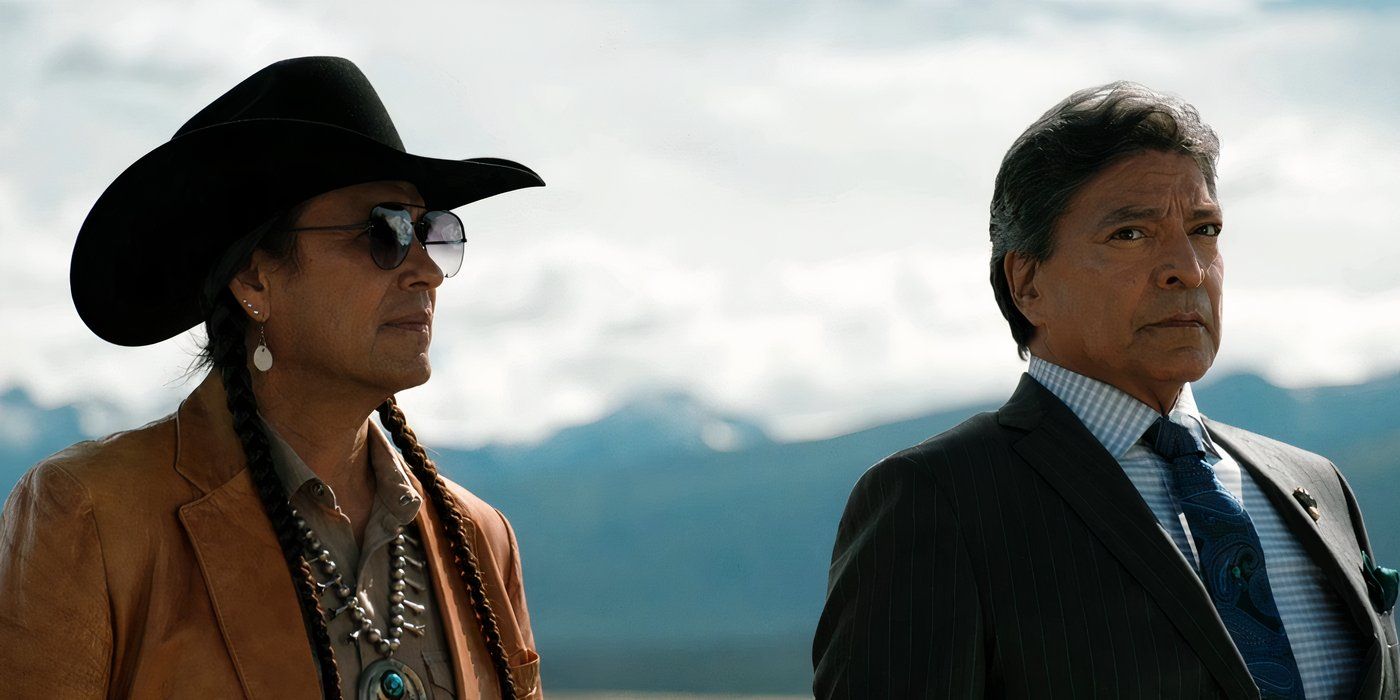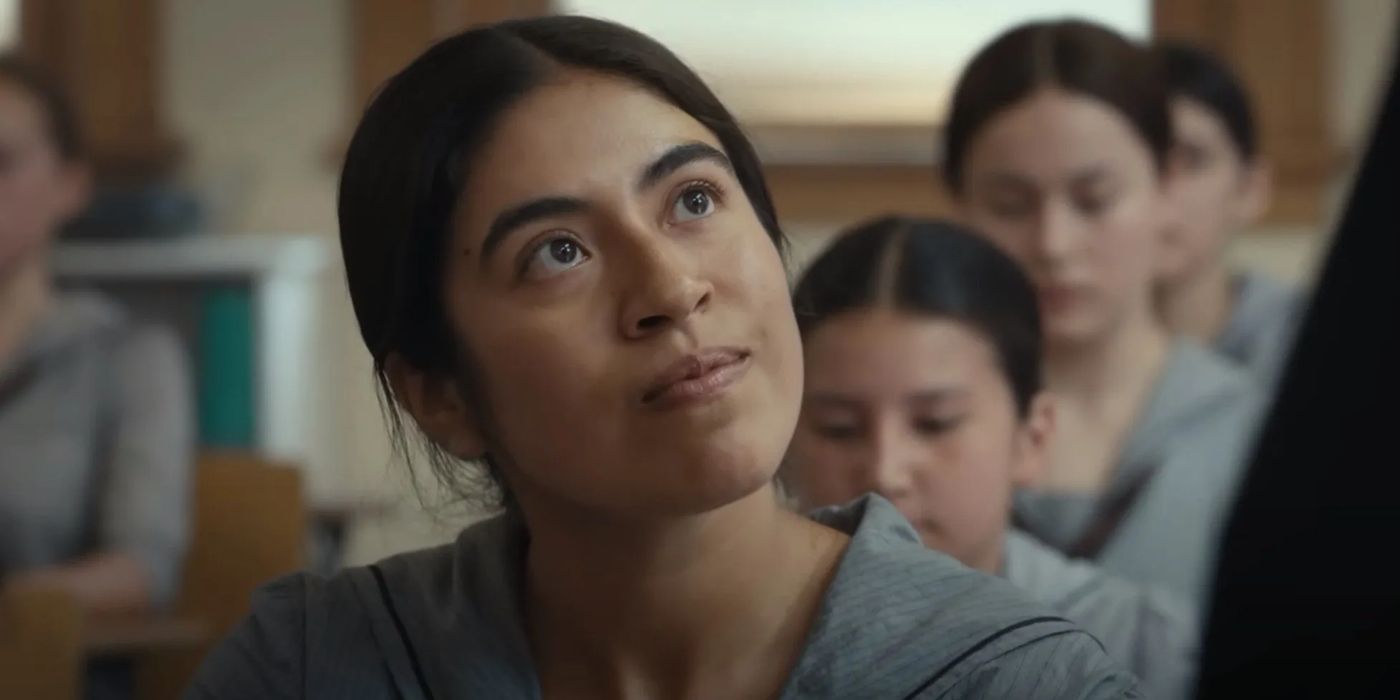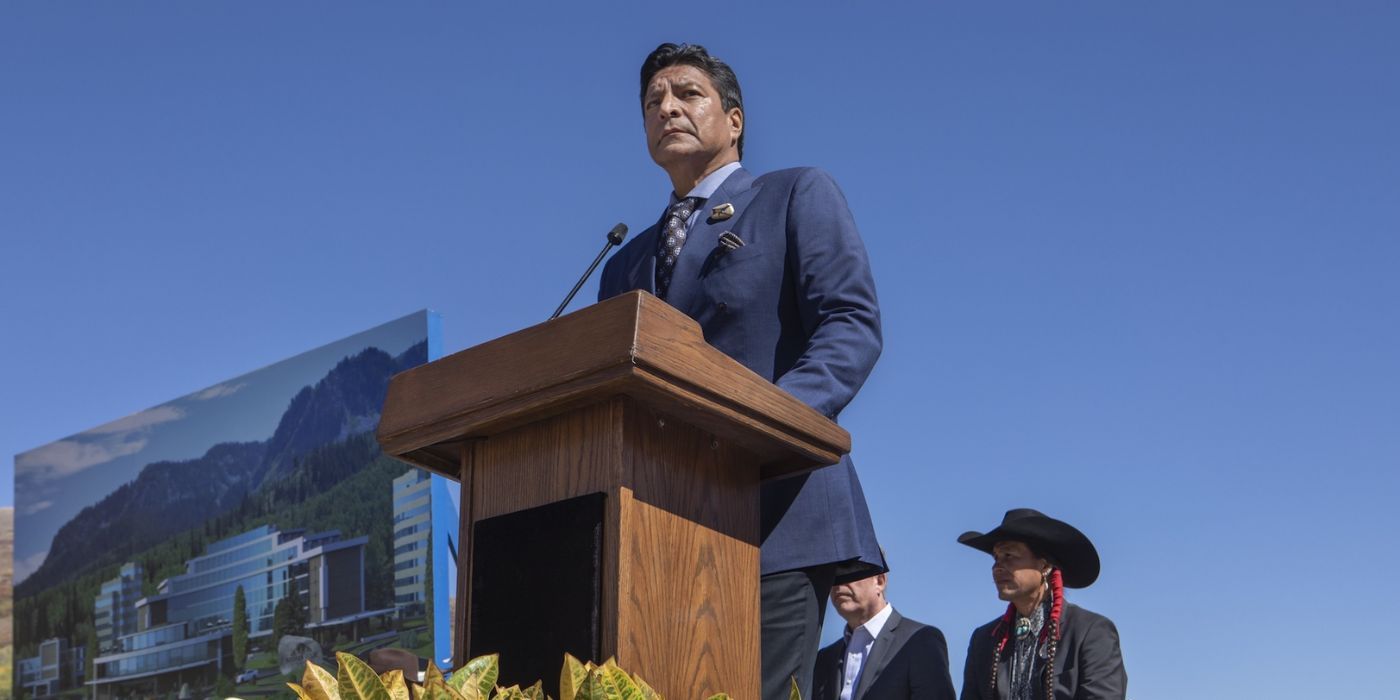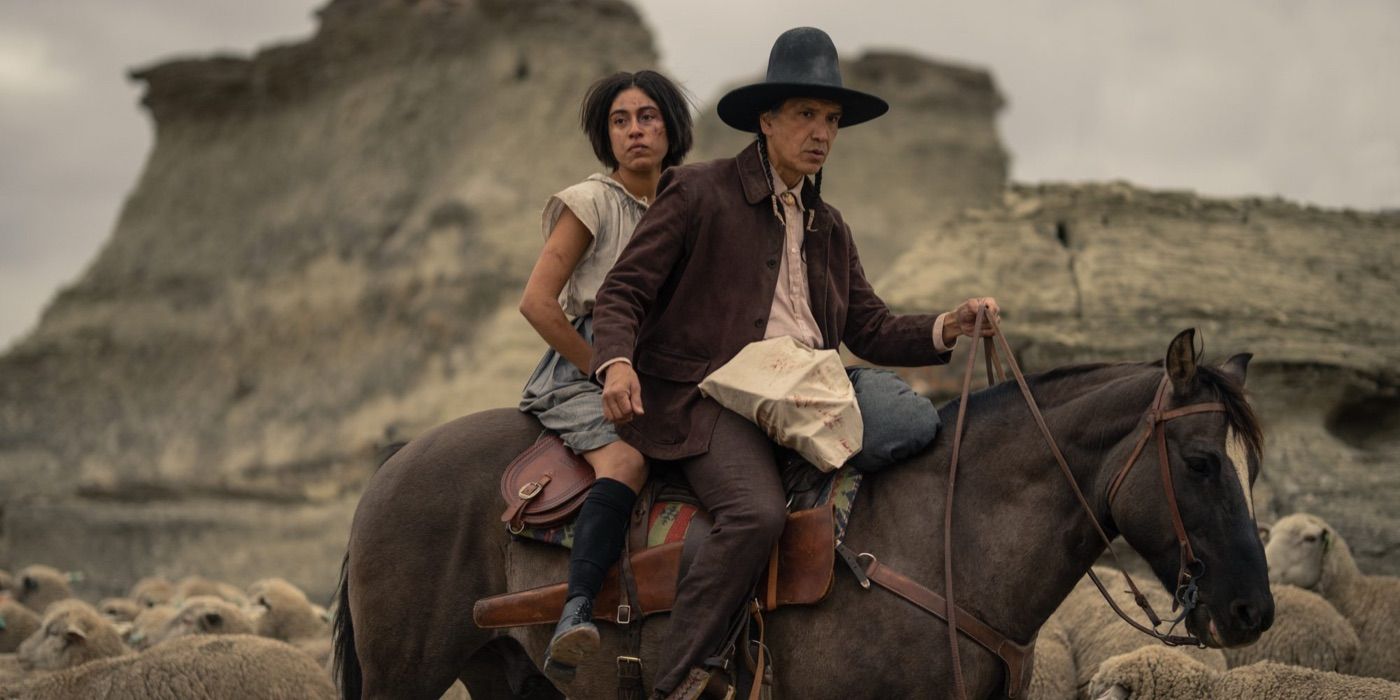Teonna Rainwater’s 1923 storyline features harrowing scenes made all the more difficult to watch by being based on real history. The scenes in the Yellowstone spinoff depict the physical and emotional abuse inside a Catholic boarding school for Indigenous American youth in Montana. Teonna is beaten and brutalized for forgetting small details in her lessons, for speaking her Native language, and for seemingly any excuse Sister Mary can think of for attempting to dehumanize her. Teonna fights back against her oppressors, eliciting more violent reactions from those running what were referred to as Indian Schools at the time.
Unfortunately, 1923 paints a fairly historically accurate picture of what transpired inside these boarding schools. The horrific institutions seen in 1923 were real and were founded by Western settlers specifically to attempt to forcibly assimilate Indigenous communities displaced by the Westward Expansion of America. Teonna’s abuse makes 1923 the darkest Yellowstone story yet, set in a time when cases of abuse in Catholic boarding schools were rampant across the United States as well as in Canada. The 1923 scenes focusing on this are disturbing but an important part of the overall story.
The Real History Of Catholic Boarding Schools For Indigenous Americans
Such Schools Brutally Forced Indigenous Children To Abandon Their Traditions And Culture
The 1923 Catholic School scenes and narrative are, tragically, based on real events that transpired throughout the US in the early 20th century. Father Renaud and Sister Mary’s horrible treatment of Teonna is based on historical accounts of so-called “American Indian boarding schools,” which first gained popularity in the mid-1800s. Only one of these schools was founded in Montana – the Fort Shaw Indian School. However, almost 200 more sprang up across almost 30 American states since the 1840s, with a higher concentration in states like Oklahoma, Minnesota, and South Dakota.
As seen in 1923, the goal of the so-called “Indian Schools” was to attempt to assimilate Indigenous youth into white Western culture by erasing their language and cultural identity, baptizing them into Christianity, and replacing their tribal names. This paved the way for the inhumane treatment of Indigenous American children across different generations. As explained by the actor who plays Sister Mary, Jennifer Ehle, in her 1923 Screen Rant interview:
“Sister Mary is a person who believes, as the people who were running these residential schools actually did believe, that you had to ‘kill the Indian to save the man.’ You had to force assimilation; you had to remove all cultural identity from these children who had been removed forcibly from their families and were living in isolation.”
Though most of these boarding schools have either been closed or heavily reformed since the late 20th century, the culture of abuse fostered by these institutions has left permanent scars in the history of America’s Indigenous nations. While the scenes of abuse in 1923 are jarring, Aminah Nieves (who plays Teonna in 1923) says that it’s a tale that needs to be tackled:
“Yeah, it’s hard. But being indigenous, it’s our duty to tell our stories and to tell them as strongly, quickly, and powerfully as we can. It’s what we’re born into, and we’re storytellers from the jump. You know what I’m saying? Continuing to tell our story as honestly as we can is very important.”
Why The 1923 Indian School Contextualizes Yellowstone
Is Thomas Rainwater The Hero Of Yellowstone?

The cruel establishments known as the Indian Schools in 1923 are not only a haunting aspect of that series but also an important piece of context for the original Yellowstone series. Since the first episode of Yellowstone, Thomas Rainwater has been one of the main antagonists of John Dutton. He wants the Yellowstone ranch and is not shy about sharing his contempt for any of the white people who fight over the land that he maintains belongs to his people.
Given that John Dutton is the protagonist, it is easy to see Thomas as a villain early in the series, but by the end, he is closer to being the true hero of Yellowstone. The scenes of the so-called Indian Schools in 1923 show that Taylor Sheridan and the show realize that Thomas Rainwater’s fight against the Duttons is not as simple as just wanting land. It is based on generations of cruelty, abuse, and murder of his people at the hands of white people whose descendants now complain of others trying to take their land.
While the ending of Yellowstone sees the remaining members of the Dutton family succeed in keeping their ranch preserved, their decision to hand over the land to Thomas Rainwater and the reservation gives them the final victory of the series and sees them earn a little justice for the long history of abuse they endured.
How Aminah Nieves And Jennifer Ehle Explain The 1923 Boarding School Scenes

The Actors Sought To Ensure Safety During The Intense Scenes
As expected with how harrowing the scenes in the so-called Indian School in 1923 were, filming them was an intense experience. Aminah Nieves and Jennifer Ehles both spoke about the process (via TV Insider), explaining that the first scene of Sister Mary beating Teonna in the classroom was filmed on their first day. Given the intensity of the scene, the set was respectful one with Nieves explaining that there were well-established boundaries and the two actors “both handled it pretty well, and we gave each other space when we needed it.”
The actors also spoke about the perspectives of each of their characters amid their violent confrontations. Nieves explained that Teonna didn’t enjoy hurting Sister Mary even if it was retribution for the nun’s own cruelty, saying it “wasn’t an action that she really desired to do, but it was one that she had to do to save herself and everyone in that room.”
Meanwhile, Ehles explained that Sister Mary saw herself as a protector in her own warped way as she truly believed this was the best way to help these girls, though notes that is because Sister Mary is “full of intense ignorance and damage.”
Even with the difficult nature of the scenes, Nieves shares the pride she feels in being able to bring these stories to a larger audience and the importance of speaking about this as part of history. She acknowledges that it is something that has affected generations and will continue to, saying “It’s something that lives with us whether we want it to or not. It’s going to live with our children.”
She also expressed the feeling of responsibility she had in bringing a story like this to light, saying “doing this, it’s our duty, and it’s very important. I’m so honored to be here, to be telling our stories.”
Is Teonna Related To Yellowstone’s Chief Thomas Rainwater?
A Connection To Teonna Could Foreshadow Thomas’ Move Against The Duttons

Teonna could be related to Yellowstone’s Chief Thomas Rainwater, who heads the Confederated Tribes of Broken Rock in the flagship Taylor Sheridan series. Notably, despite Thomas’ position of authority, he and Teonna are both heavily abused in their respective shows – albeit in different ways – which is reflective of how little has changed in terms of how the white government treats Indigenous Americans since the 1800s.
Although both 1923 and Yellowstone paint the Duttons as pioneering heroes of colonial and contemporary America, the characterizations of Indigenous Americans in either series make it clear who the real villains are in Yellowstone‘s universe. While fans of Yellowstone continue to be divided regarding series creator Taylor Sheridan’s political stances, there’s no question that 1923 is adapting America’s dark history with reverence and accuracy.
Moreover, 1923 could be setting up Teonna to have the surname Rainwater, which means that the series could, at some point, reveal that Teonna is an ancestor of Chief Thomas Rainwater. Considering what Teonna has already been through in 1923, perhaps Angela Blue-Thunder was fully justified in brutally admonishing the Broken Rock chief for not doing everything in his power to kick the trespassers off their ancestral domain in Yellowstone.



